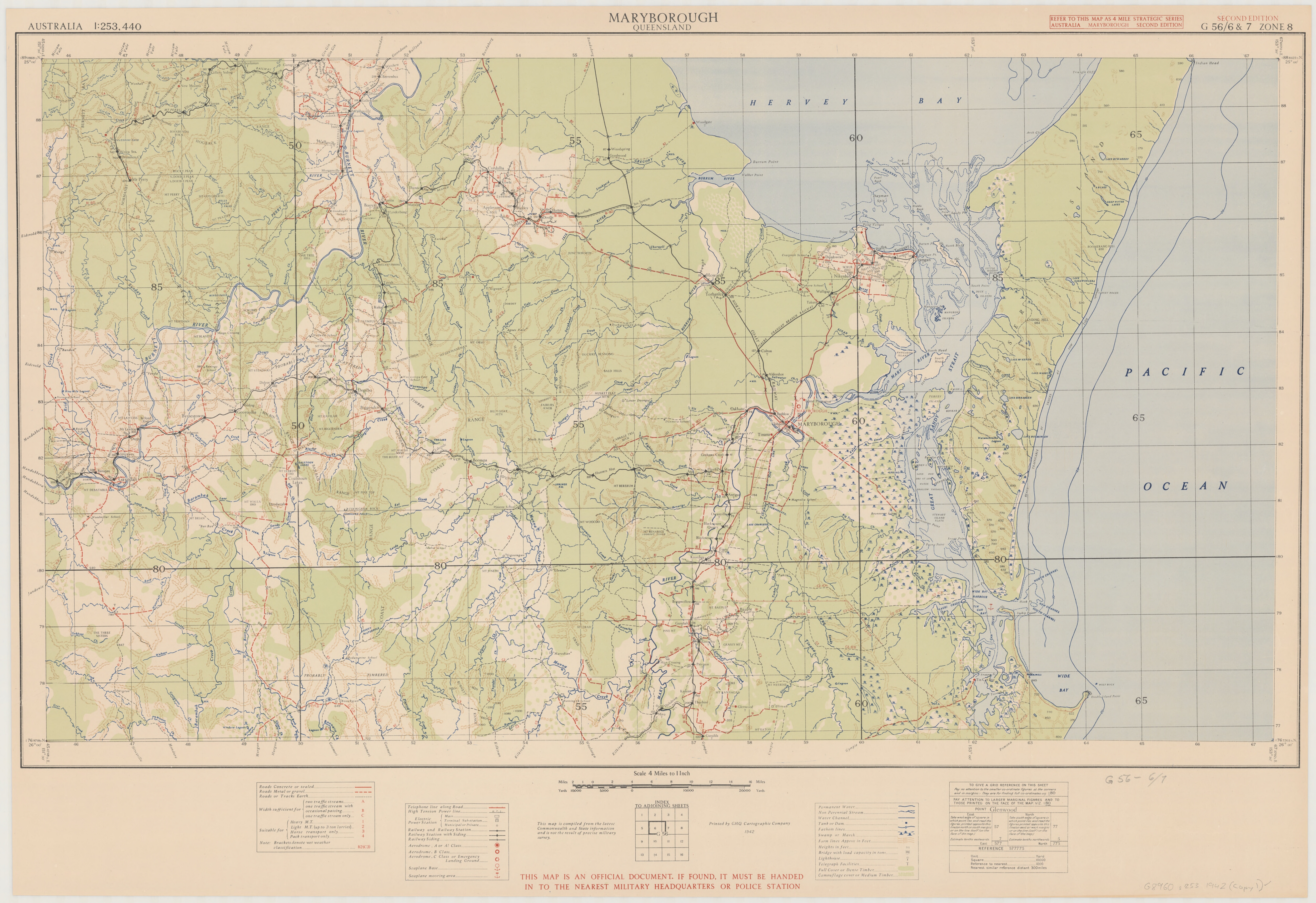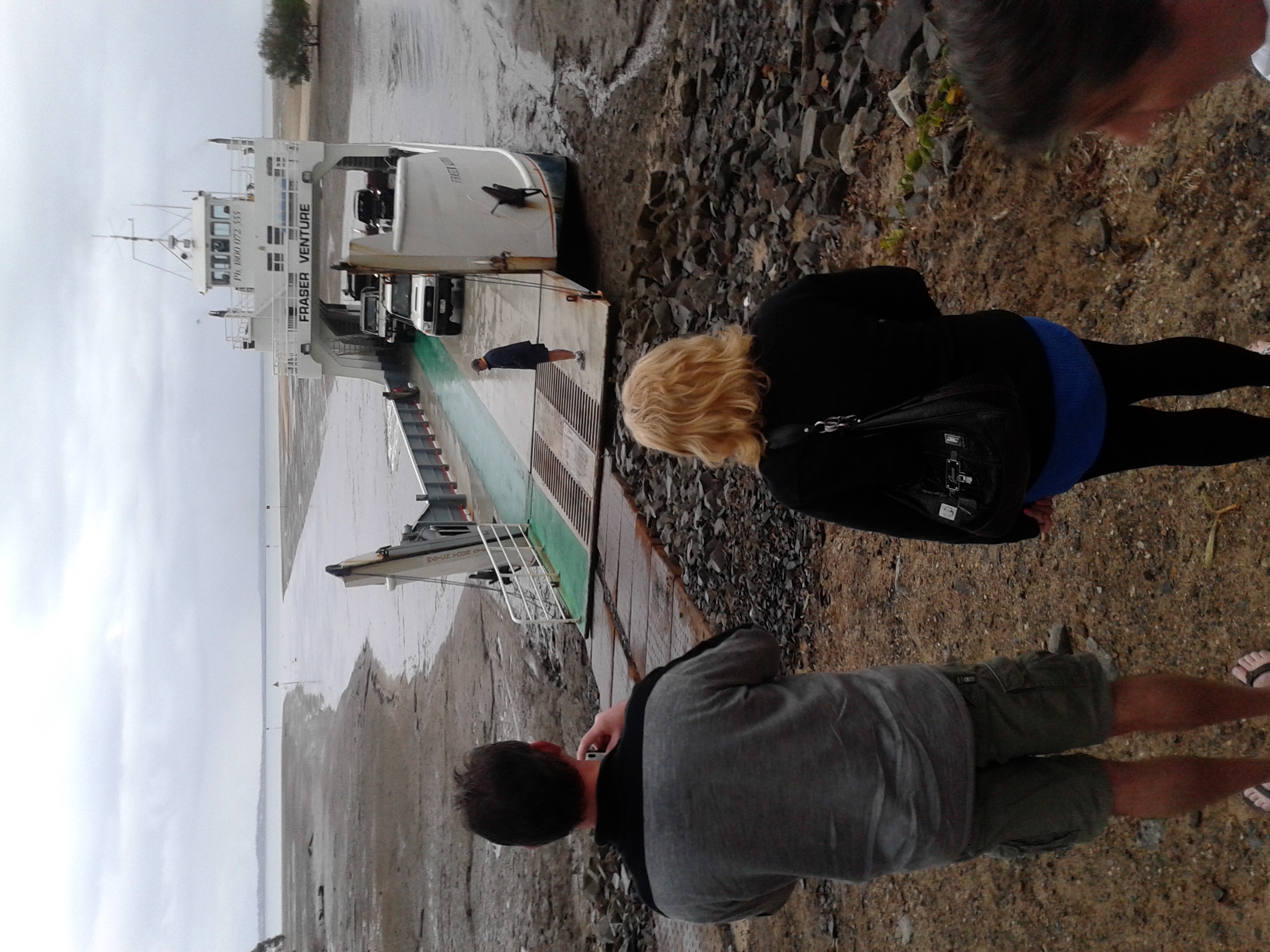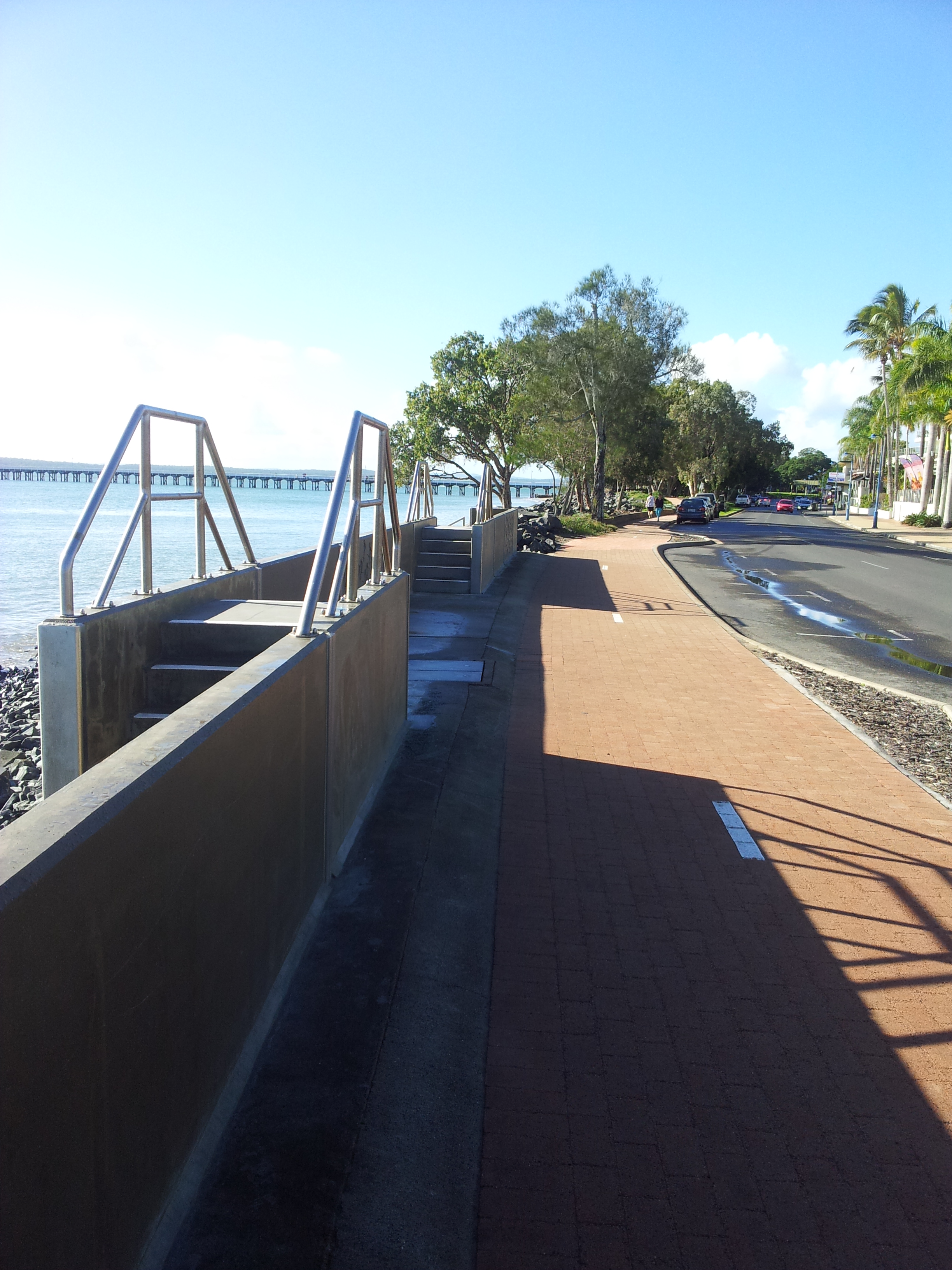|
River Heads
River Heads is a coastal town and locality in the Fraser Coast Region, Queensland, Australia. In the , the locality of River Heads had a population of 2,044 people. Geography River Heads is south of the city of Hervey Bay. The town is built on a narrow peninsula surrounded by the Great Sandy Strait (to the east), the mouth of the Mary River (to the south) and the mouth of the Susan River (a tributary of the Mary River) to the south-west. River Heads Road enters the locality from the north ( Booral) and extends south to the tip of the peninsula (being renamed Ariadne Street on the tip of the peninsula); it divides the locality with the urban area to the east and farmland to the west (mostly used as grazing on native vegetation). History River Heads was originally called Bingham, but was renamed on 22 November 1986. Bingham State School opened on 10 May 1915 (probably then known as Mary River Heads Provisional School). It closed on 5 September 1926. At the , the locality ... [...More Info...] [...Related Items...] OR: [Wikipedia] [Google] [Baidu] |
AEST
Australia uses three main time zones: Australian Western Standard Time (AWST; UTC+08:00), Australian Central Standard Time (ACST; UTC+09:30), and Australian Eastern Standard Time (AEST; UTC+10:00). Time is regulated by the individual state governments, some of which observe daylight saving time (DST). Australia's external territories observe different time zones. Standard time was introduced in the 1890s when all of the Australian colonies adopted it. Before the switch to standard time zones, each local city or town was free to determine its local time, called local mean time. Now, Western Australia uses Western Standard Time; South Australia and the Northern Territory use Central Standard Time; while New South Wales, Queensland, Tasmania, Victoria (Australia), Victoria, Jervis Bay Territory, and the Australian Capital Territory use Eastern Standard Time. Daylight saving time (+1 hour) is used in jurisdictions in the south and south-east: South Australia, New South Wales, Vict ... [...More Info...] [...Related Items...] OR: [Wikipedia] [Google] [Baidu] |
Mary River (Queensland)
The Mary River (Kabi Kabi: ''Moocooboola'') is a major river system located in the South East and Wide Bay–Burnett regions of Queensland, Australia. Etymology The river was traditionally named ''Moocooboola'' by the indigenous Australian Kabi people. The river was named ''Wide Bay River'' on 10 May 1842 by early European explorers, Andrew Petrie and Henry Stuart Russell. The official name was changed on 8 September 1847 (prior to Queensland becoming a separate colony) by Charles Augustus FitzRoy, then Governor of New South Wales, to ''Mary River'' — after his wife Lady Mary Lennox (15 August 1790 to 7 December 1847). History The Mary River was used for rafting timber during the early years of European land settlement, and the discovery of gold at Gympie in 1867 brought an inflow of miners and pastoralists. Alluvial flats along the Mary River and some of its tributaries were used for cropping, and there was small-time dairying in the 1880s. Course and features The ... [...More Info...] [...Related Items...] OR: [Wikipedia] [Google] [Baidu] |
Coastal Towns In Queensland
The coast, also known as the coastline or seashore, is defined as the area where land meets the ocean, or as a line that forms the boundary between the land and the coastline. The Earth has around of coastline. Coasts are important zones in natural ecosystems, often home to a wide range of biodiversity. On land, they harbor important ecosystems such as freshwater or estuarine wetlands, which are important for bird populations and other terrestrial animals. In wave-protected areas they harbor saltmarshes, mangroves or seagrasses, all of which can provide nursery habitat for finfish, shellfish, and other aquatic species. Rocky shores are usually found along exposed coasts and provide habitat for a wide range of sessile animals (e.g. mussels, starfish, barnacles) and various kinds of seaweeds. Along tropical coasts with clear, nutrient-poor water, coral reefs can often be found between depths of . According to a United Nations atlas, 44% of all people live within 5 km (3.3mi) o ... [...More Info...] [...Related Items...] OR: [Wikipedia] [Google] [Baidu] |
Towns In Queensland
A town is a human settlement. Towns are generally larger than villages and smaller than cities, though the criteria to distinguish between them vary considerably in different parts of the world. Origin and use The word "town" shares an origin with the German word , the Dutch word , and the Old Norse . The original Proto-Germanic word, *''tūnan'', is thought to be an early borrowing from Proto-Celtic *''dūnom'' (cf. Old Irish , Welsh ). The original sense of the word in both Germanic and Celtic was that of a fortress or an enclosure. Cognates of ''town'' in many modern Germanic languages designate a fence or a hedge. In English and Dutch, the meaning of the word took on the sense of the space which these fences enclosed, and through which a track must run. In England, a town was a small community that could not afford or was not allowed to build walls or other larger fortifications, and built a palisade or stockade instead. In the Netherlands, this space was a garden, mor ... [...More Info...] [...Related Items...] OR: [Wikipedia] [Google] [Baidu] |
Queensland Government
The Queensland Government is the democratic administrative authority of the Australian state of Queensland. The Government of Queensland, a parliamentary constitutional monarchy was formed in 1859 as prescribed in its Constitution, as amended from time to time. Since the Federation of Australia in 1901, Queensland has been a State of Australia, with the Constitution of Australia regulating the relationships between all state and territory governments and the Australian Government. Under the Australian Constitution, all states and territories (including Queensland) ceded powers relating to certain matters to the federal government. The government is influenced by the Westminster system and Australia's federal system of government. The Governor of Queensland, as the representative of Charles III, King of Australia, holds nominal executive power, although in practice only performs ceremonial duties. In practice executive power lies with the Premier and Cabinet. The Cabinet of ... [...More Info...] [...Related Items...] OR: [Wikipedia] [Google] [Baidu] |
Fraser Coast Regional Council
The Fraser Coast Region is a local government area in the Wide Bay–Burnett region of Queensland, Australia, about north of Brisbane, the state capital. It is centred on the twin cities of Hervey Bay and Maryborough and also contains Fraser Island. It was created in 2008 from a merger of the Cities of Maryborough and Hervey Bay and the Shires of Woocoo and most of Tiaro. In June 2018 it had a population of 105,463. The 2021-2022 budget of the Fraser Coast Regional Council is A$387 million. History Butchulla (also known as Batjala, Badtjala, Badjela and Badjala) is the language of the Fraser Coast region, including Fraser Island. Butchulla language region includes the landscape within the local government boundaries of the Fraser Coast Regional Council, particularly the towns of Maryborough and Hervey Bay extending south towards Noosa and north to Howard. Prior to the 2008 amalgamation, the Fraser Coast Region existed as four distinct local government areas: * the Ci ... [...More Info...] [...Related Items...] OR: [Wikipedia] [Google] [Baidu] |
Fraser Island
Fraser Island (Butchulla: ) is a World Heritage-listed island along the south-eastern coast in the Wide Bay–Burnett region, Queensland, Australia. The island is approximately north of the state capital, Brisbane, and is within the Fraser Coast Region local government area. The world heritage listing includes the island, its surrounding waters and parts of the nearby mainland. Fraser Island, and some satellite islands off the southern west coast and thus in the Great Sandy Strait, previously formed the County of Fraser, which was subdivided into six parishes. Among the islands were Slain Island, Tooth Island, Roundbush Island, Moonboom Island, Gardner Island, Dream Island, Stewart Island, and the Reef Islands, all part of the southernmost parish of Talboor. The island is about long and wide. It was inscribed as a World Heritage Site in 1992. The island is considered to be the largest sand island in the world at . It is also Queensland's largest island, Australia's sixth ... [...More Info...] [...Related Items...] OR: [Wikipedia] [Google] [Baidu] |
Wanggoolba Creek
Wanggoolba Creek is a fresh water creek on Fraser Island Fraser Island ( Butchulla: ) is a World Heritage-listed island along the south-eastern coast in the Wide Bay–Burnett region, Queensland, Australia. The island is approximately north of the state capital, Brisbane, and is within the Fras ... with its source in the Pile Valley and mouth on the Western shores of the island. Wanggoolba Creek at Central Station is a popular tourist destination due to the crystal clear waters flowing over white sand through a rainforest valley. Ferry services from River Heads land at the mouth of Wanggoolba Creek three times daily. See also * List of rivers of Australia References Wide Bay–Burnett Rivers of Queensland {{queensland-river-stub ... [...More Info...] [...Related Items...] OR: [Wikipedia] [Google] [Baidu] |
Barge In River Heads
Barge nowadays generally refers to a flat-bottomed inland waterway vessel which does not have its own means of mechanical propulsion. The first modern barges were pulled by tugs, but nowadays most are pushed by pusher boats, or other vessels. The term barge has a rich history, and therefore there are many other types of barges. History of the barge Etymology "Barge" is attested from 1300, from Old French ''barge'', from Vulgar Latin ''barga''. The word originally could refer to any small boat; the modern meaning arose around 1480. ''Bark'' "small ship" is attested from 1420, from Old French ''barque'', from Vulgar Latin ''barca'' (400 AD). The more precise meaning of Barque as "three-masted sailing vessel" arose in the 17th century, and often takes the French spelling for disambiguation. Both are probably derived from the Latin ''barica'', from Greek ''baris'' "Egyptian boat", from Coptic ''bari'' "small boat", hieroglyphic Egyptian D58-G29-M17-M17-D21-P1 and similar ''b ... [...More Info...] [...Related Items...] OR: [Wikipedia] [Google] [Baidu] |
Urangan, Queensland
Urangan is a coastal Suburbs and localities (Australia), suburb of Hervey Bay, Queensland, Hervey Bay in the Fraser Coast Region, Queensland, Australia. In the Urangan had a population of 9,764 people. Geography The locality is bounded to the north by Hervey Bay (the bay not the town, ) and to the east by the northern end of the Great Sandy Strait (and beyond it, Fraser Island). Dayman Point is a headland () Shelly Beach is a beach that extends into neighbouring Torquay (). Urangan Boat Harbour is a harbour (). In the far south west of the suburb is the single runway Hervey Bay Airport. History The name ''Urangan'' is derived from Kabi language, either from the word ''yuangan'' meaning ''dugong'', or ''yerengen'' meaning ''Shellfish, small shell fish''. The local landmarks of Dayman Spit and Dayman Point were named after Lieutenant Joseph Dayman of the Royal Navy. Dayman was the first European to navigate through the Great Sandy Strait on 10 November 1846 in a small de ... [...More Info...] [...Related Items...] OR: [Wikipedia] [Google] [Baidu] |
Queensland Family History Society
The Queensland Family History Society (QFHS) is an incorporated association formed in Brisbane, Queensland, Australia. History The society was established in 1979 as a non-profit, non-sectarian, non-political organisation. They aim to promote the study of family history local history, genealogy, and heraldry, and encourage the collection and preservation of records relating to the history of Queensland families. At the end of 2022, the society relocated from 58 Bellevue Avenue, Gaythorne Gaythorne is a suburb in the City of Brisbane, Queensland, Australia. In the , Gaythorne had a population of 3,023 people. Geography Gaythorne is located seven kilometres north-west of the Brisbane central business district. It is bounded to ... () to its new QFHS Family History Research Centre at 46 Delaware Street, Chermside (). References External links * Non-profit organisations based in Queensland Historical societies of Australia Libraries in Brisbane Family hist ... [...More Info...] [...Related Items...] OR: [Wikipedia] [Google] [Baidu] |
Susan River (Queensland)
The Susan River is a river located in the Wide Bay–Burnett region of Queensland, Australia. Course and features The river rises south of the town of Hervey Bay and west of the Maryborough Hervey Bay Road between the towns of Susan River and Walliebum. The river flows generally in an east by south direction, joined by the Bunya Creek, before reaching its confluence and emptying into the Mary River at River Heads in the Great Sandy Strait. Along the banks of the Susan River is one of the largest remaining Blue Gum forests within the Mary River catchment area, together with melaleuca forests. At the river mouth, mangrove forests dominate the intertidal areas. The Susan River Bridge carries the road that links Maryborough and Hervey Bay and was built in 1977. The bridged carries more than 10,000 vehicles each day. It remained unnamed until 2009. In 2007, an unusual angler fish was found by a local fisherman. The fish was the first of its kind to have its genetic data reco ... [...More Info...] [...Related Items...] OR: [Wikipedia] [Google] [Baidu] |



.jpg)




